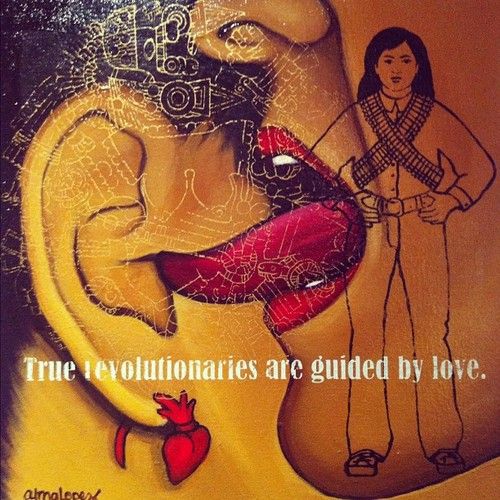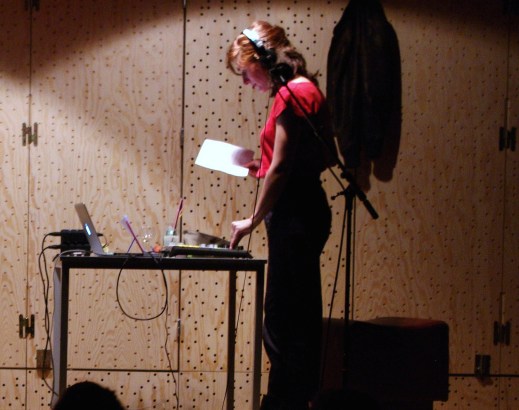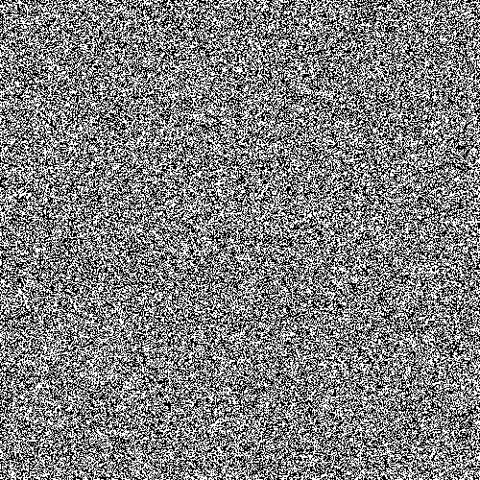Soundwalking on the Edges: Sound, Safety and Privilege in São Paulo, Brazil

 Since its inception at the World Soundscape Project in the 1970s, soundwalking has emerged as a critical method for sound studies research and artistic practice. Although “soundwalking” now describes a diversity of activities and purposes, critical discussions and reading lists still rarely represent or consider the experiences of people of color (POC). As Locatora Radio hosts Diosa and Mala have argued in their 2018 podcast about womxn of color and the sound of sexual harassment in their everyday lives and neighborhoods, sound in public space is weaponized to create “sonic landscapes of unwelcome” for POC.
Since its inception at the World Soundscape Project in the 1970s, soundwalking has emerged as a critical method for sound studies research and artistic practice. Although “soundwalking” now describes a diversity of activities and purposes, critical discussions and reading lists still rarely represent or consider the experiences of people of color (POC). As Locatora Radio hosts Diosa and Mala have argued in their 2018 podcast about womxn of color and the sound of sexual harassment in their everyday lives and neighborhoods, sound in public space is weaponized to create “sonic landscapes of unwelcome” for POC.
While we often think of soundwalks as engines of knowledge production, we must also consider that they may simultaneously silence divergent worldviews and perspectives of space and place. In “Black Joy: African Diasporic Religious Expression in Popular Culture,” Vanessa Valdés explored alternate conceptions of space held by practicioners of Regla de Ocha, epistemologies rarely, if ever, addressed via soundwalks. “Within African diasporic religions . . . including Palo Monte, Vodou, Obeah, Macumba, Candomblé – there is respect for the seemingly inexplicable,” Valdés remarks, “there is room for the miraculous, for that which can be found outside the realms of what has been deemed reasonable by systems of European thought. There is room for faith.” Does current soundwalk praxis—either as research method, public intervention, artistic medium, field recording subject, or pop culture phenomenon—impose dominant ideas about space and knowledge production as much as—if not more–they offer access to alternatives? Are there alternate historiographies for soundwalking that predate the 1970s? Can soundwalks provide such openings, disruptions, and opportunities without a radical rethinking? What would a decolonial/decolonizing soundwalk praxis look and sound like?
Soundwalking While POC explores these questions through the work of Allie Martin, Amanda Gutierrez, and Paola Cossermelli Messina. To read the series from the beginning click here. Today, Paola Cossermelli Messina revisits the São Paolo of her youth. —JS
When at home in São Paulo, Brazil, I rarely walk to where I’m going. In a city plagued by mobility issues, a private car is the most efficient way of getting around. Other factors in opting out of public transportation include the limited reach of the subway system, overcrowdedness on buses, sexual harassment of women on public transport going unpunished, and price hikes that lead to no infrastructural improvements. The 2013 protests in Brazil, the largest demonstration in two decades, were initially set off by increased ticket prices for the bus, train, and metro, and later encompassed additional concerns such as corruption and police brutality.
Having spent most of my childhood and all of my high school years (between 1987 and 2005) in São Paulo, I find myself looking back at my sensory experience of the city as one mediated by fear, segregation, and vigilance. I have become interested in Vincent Adrisani’s (2015) idea of sonic citizenship—ordinary, everyday auditory interactions and experiences through which presence in and claim over public spaces is asserted. Consequently, I recorded the following soundwalks on two specific routes to engage with what were once-familiar surroundings as a “sonic citizen.” These soundwalks made me revisit fears and privileges from my life as a queer, white/POC, expatriate/immigrant on the edges of color, as I walked through a microcosm of São Paulo, recording the urban soundscapes that enveloped my day-to-day.
Looking up Rua Juquiá on December 29th, 2018. Images by author
The audio clips included in this essay were sampled from a morning walk between my former high school and home in the Zona Oeste (Western Region), and also from a brief walk on Avenida Paulista. This is a bustling, iconic avenue at the top of one of the steepest hills in the city, located at the crux of the Western, Central and Southern regions of São Paulo. Where one soundwalk ends is merely a ten minute walk from where the other begins. These are physically close, but sonically contrasting, public spaces, both of which are significant to my experiences in the city.
Rua Juquiá is a tree-lined street with walled-off houses and, in my memory, filled to the brim with cars as early as seven in the morning. My school was the only non-residential building on that street. During the day, personal security guards and drivers would find a place to park and nap until the final school bell rang. I recall making a bee line from my mother’s car to the school gate, motivated by word-of-mouth tales of “sequestros relâmpagos” (literally translated to “lightning kidnappings”). Young people going to private schools were said to be the focus of these kidnappings, in which they would be picked off the street by kidnappers and held for ransom. There was one occurrence of this while I was a student at that school.
With these stories in mind (and sometimes also in my dreams), a sensory engagement with my surroundings was often limited in time and scope, as I moved cautiously between interiors – private vehicles, school, thirty-story buildings towering high above the streets, and shopping centers patrolled by armed guards. At night as I laid down to sleep, the sounds of trucks straining to make their way up the steep slope of my street and motorcycle exhaust pipes blasting echoed in lively conversation with each other.
The relationship between my privilege and racial identity were, at that time, quite different from how it would come to be in the United States. Being of mixed Middle Eastern and European descent in Brazil is an identifier of whiteness and, more often than not, an indicator of a comfortable living situation. My school uniform with its red blazer and dark grey skirt, the uncommonly green neighborhood where most of my daily routines took place, and the double-gated apartment building I lived in, were all indicators of my status.
Identifying as queer is the only aspect that overlaps the boundaries between Brazil and the United States, where I currently reside. In both nations, the expression of this identifier is mediated by different levels of fear of violence—not of violence like the one I feared in Brazil, but violence nonetheless. Throughout my youth, it lurked beneath the surface of my consciousness, compounding the fear I already carried in my body. In the U.S., the compounding factors are my mixed racial features and immigration status (or as the USCIS dubs us ‘aliens’). In the eyes of all major institutions of this country, I am a person of color. As such, the soundwalk in São Paulo also became an experiment in juxtaposing these varying experiences at the intersection of privilege, queerness, and race.
In listening to the soundwalk clips below, I find that the absence of people’s voices and sounds, rather than the presence of supposed ‘dangerous people’, per se, is the most disconcerting thing. Though nature sounds predominate in the clips from this walk, they seem to exist in a cement vacuum.
The front entrance to my middle school and high school on Rua Juquiá.
On the morning of December 29th, 2018, there were only a few parked cars and hardly any people on the street. I looked up at the wall obstructing my school from view. These were initially put up at some point during my senior year in 2005, but have been given added height recently, with cameras like bulbous black eyes surveilling the streets from every one of its angles. On Rua Jacupiranga, perpendicular to Rua Juquiá, there is a new addition – a set of ‘city cameras’, curiously placed at eye level. This is hardly what Jane Jacobs meant by “eyes on the street” and their contribution to a feeling of safety in public spaces. In this case, the eyes are cameras and the listening experiences within these spaces are subsequently fractured into the reassured and criminalized. As Robin Sheriff (2000) observed, “silence demands collaboration” and is “both a consequence and an index of an unequal distribution of power.” Although Sheriff was referencing the silence around the discussion of racism in Brazil, I can see a connection with the street level silence.
The silence that this incredibly visible form of surveillance imposes, and the replacement of human bodies with vehicles warrants the question: who and where are the “sonic citizens” of these streets? The only other people outside, besides me, were a few construction workers, shoveling bits of cement into a bin and security guards standing outside walled-off houses. They watched me for a brief moment, concluding soon enough that I was no threat to the houses they were employed to protect. The heightened level of security on the street made me wonder if I was going to be questioned by them, but sure enough, I was deemed unthreatening.
City cameras at eye level on Rua Jacupiranga, perpendicular to Rua Juquiá
On Rua Juquiá and in the neighborhood of my childhood home, about a seven-minute drive away, the bem-te-vi is heard above everything else. The surrounding neighborhood, known as Jardins (‘gardens’), is one of the greenest in the city, yet only the birds seem to be voicing their presence and delight. The name of this species of bird (which translates to “I see you well”) is an onomatopoeia for what their cries sound like. I can’t help but think of them as true sonic citizens of these streets. That citizenship practices have to do with the less powerful establishing their presence in a public space is an idea echoed by Saskia Sassen (2006) and others quoted by Vincent Adrisani (2015). The bem-te-vi, the construction workers and I, as a listener, were momentarily engaged in this practice, though questions such as, “Why are you here?” and “Do you want to know why I am here?” remained between the human participants.
As I ventured further away from my school, the baseline hum of traffic slowly shifted into the background. Up until this point, I had my recording equipment – a Zoom H6 and Rode NTG 2 shotgun microphone – hidden in my bag in order to draw less attention to myself. This is certainly a decision informed by the same fear that would make me hurry from the car to the school gate. As a consequence of this, in the audio clips there may be a light, rhythmic thudding from the microphone hitting the inside of my tote bag.
(A map of my two soundwalk routes – in green, the path from my former school and home; in red, a brief walk on Avenida Paulista.
I decided to record a second soundwalk roughly twenty minutes from my school to present dichotomous soundscapes and ways of living, in proximity. Avenida Paulista is a nearly two mile long avenue with ample sidewalks, modelled on those in Manhattan. It used to be more of a dividing line between different sides of São Paulo. When I was growing up and even now, I know that if I take Rua Augusta towards Baixo Augusta (‘low’ Augusta), I’ll find LGBTQ friendly bars and clubs. I remember driving by them with my parents when I was a teenager; there was an implied danger there, too, though it was never uttered out loud like the kidnapping stories.
Though during the day it is a hub for office workers, on the night I recorded this soundwalk the air was buzzing with voices, live music, skateboard decks grating on cement, and street vendors announcing their wares. The abundance of human sounds is clearly in stark contrast to Rua Juquiá, but there is an increase in the sheer number and variety of sounds, too. The surveillance that before stood out like a sore thumb – at eye level and identified with signs – is quite inconspicuous on this soundwalk. Generally, police presence is high on Avenida Paulista – in contrast to the privately hired security on Rua Juquiá’s and that of other wealthy, residential streets.
As a walker and listener, it is clear that the second soundwalk presented a wealth of opportunities to engage as a sonic citizen, while the first – as it was in the past – remained complicated by fear, vigilance, and a vacuum of human activity. I contend that when sonic citizenship is articulated it is, in turn, reflected back to the listener. This exchange is what makes it so valuable on both the level of the community and individual. It made me wonder if having walked Avenida Paulista and its offshoots more often in my youth would have lessened fears and brought me closer to embracing certain aspects of my identity sooner.
Instead, I find parts of myself are sonically engaged in one part of the world and others someplace else. If future soundwalks bridge those gaps in the future, I will be able to listen back to these recordings as the first steps I took in that direction.
—
Featured image: “são paolo” by Flickr user Samuel Loo, CC BY-NC-ND 2.0
—
Paola Cossermelli Messina is a sound designer and audio engineer with research interests that fall in the intersections between music, politics and gender. As Project Manager of Sound Thinking NYC, a program of the CUNY-Creative Arts Team, she has recently gained interest in ties between her work in music and technology to initiatives in education. She holds a B.A. in Music and Writing from Sarah Lawrence College and an M.A. in Media Studies from The New School, with a specialization in sound. Her Master’s thesis on the oral histories of Iranian women musicians received an award from the Middle East Studies Association and was later presented and published by Yale University. For the past 5 years, she has also worked as a Producer and Editor of the Arab Studies Institute podcast Status Hour.
—

REWIND! . . .If you liked this post, you may also dig:
El Caracol: A Stroll through Space and Time in Mexico City–Anthony Rasmussen
Learning to Listen Beyond Our Ears: Reflecting Upon World Listening Day–Owen Marshall
“How Many Latinos are in this Motherfucking House?”: DJ Irene, Sonic Interpellations of Dissent and Queer Latinidad in ’90s Los Angeles—Eddy Francisco Alvarez Jr.
The Top Ten Sounding Out! Posts of 2015!

—
Featured image by bostik_ @Flickr CC BY-NC-ND.
—
 REWIND! . . .If you liked this post, you may also dig:
REWIND! . . .If you liked this post, you may also dig:
Misophonia: Toward a Taxonomy of Annoyance — Carlo Patrão
Sounding Out! Podcast #38: Radio Frequencies, Radio Forms, LIVE — Monteith McCollum and Jennifer Stoever
Mediated Sexuality in ASMR Videos — Emma Leigh Waldron




 8). “
8). “






















Recent Comments